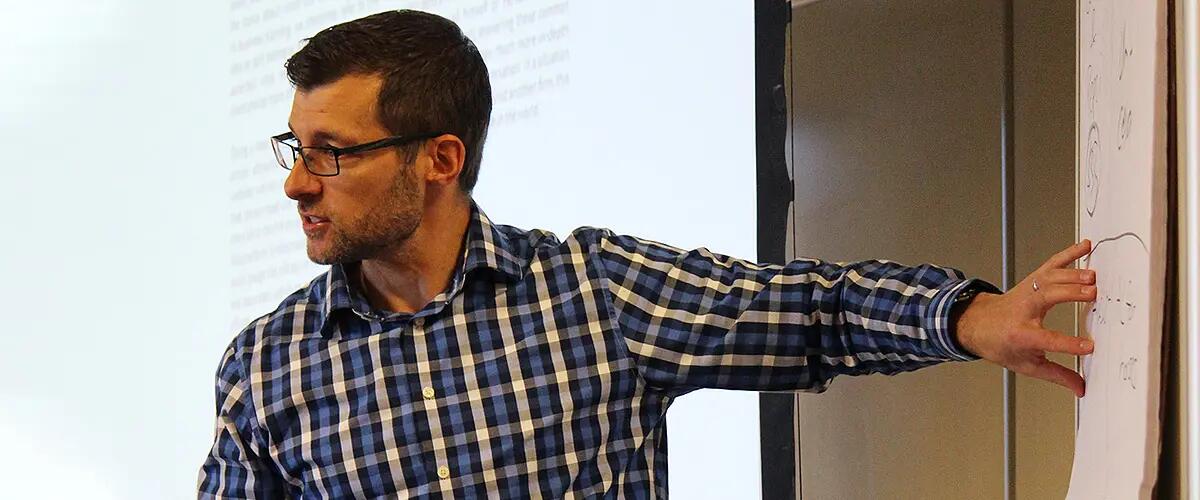
The Not-Doing List – Focusing Your Strategic Marketing Plan
A Medical Director friend of mine from Yale recently shared an important story with me about his involvement with the AIDS epidemic in 1988-1989:
"When the epidemic was at its height, two groups, one from Yale, and the other from the World Health Organization (WHO), got together to just talk through ideas because clearly we were losing. It's hard to even relate to what was happening back then - the world was incredibly afraid. AIDS popped up in the U.S. via ‘patient zero’ a flight attendant. Things went crazy in the US, but they were far worse in Africa.
We needed a new way of looking at the problem and a new solution - or set of solutions - was desperately needed. There was no agenda, just smart people in a room.
When it came his turn, one physician who had actually spent time in Africa on the front-line of the AIDS epidemic (as opposed to the academics and politicians, and even the #2 guy at the CDC) was asked:
‘What’s the single thing you need the most?’
His answer: ‘A truck with a full tank of gas.’
It turned out that it wasn't a shortage of medicine at all. In underdeveloped countries people were dying simply because the majority of the population - living in villages well outside the major urban centers - had no means of transportation to the cities to get to the hospital. People were dying because they couldn't travel sometimes as little as 15 miles. Often, a few miles outside the cities there is no running water, no electricity, and often no reliable roads.
From a public health standpoint, Zimbabwe was considered a "basket case." They had one of the top medical infrastructures in all of Africa. The hospitals in its capital, Harare, were considered just as good as those in Chicago. Yet, it was the epicenter of the AIDS epidemic in Africa, due to exactly the aforementioned transportation problem. It was impossible to get people with no electricity and water or mechanized transportation to the medicines that would save/stabilize their disease. Hence, they died needlessly.
There was talk of quarantining an entire country, people were afraid – even some among the medical community.
It was before we knew the precise mechanism of transmission, so the first medical professionals going into Zimbabwe were making a statement just going there.
The brilliant idea that was born that day was the simple, but incredibly effective idea of using "mobile aid clinics" to bring the medicine to the villages throughout the country. This was a focused, AIDS-only effort where thousands of units of medicine were loaded into what became dozens, and then hundreds, of mobile aid clinics complete with a doctor, a nurse, and all the medicine the truck could hold.
I had a chance to be part of that first-hand in Zimbabwe; it was revolutionary, and many years later when WHO did an analysis of what helped turn the tide of the battle against AIDS, it was cited as nearly as important as the ‘triple cocktail’ of anti-viral drugs. One man saw the same problems as everyone else. But he envisioned a completely different solution.”
Here's the lesson from my friend Dave: Sometimes, we over engineer solutions. And most often, we don't need to.
How does this apply to you and your marketing plan? Effective marketing and business development is all about getting (in the parlance of baseball) your at-bats. A desire for a perfect solution oftentimes impedes our ability to participate in efforts that are good enough. What’s good enough? Showing up. And showing up often. Like the mobile aid clinics, we can’t forget our success hinges on reaching people who need you and what you offer. And we don’t just need to reach them once. Our work is a process requiring multiple touch points.
Please understand – I’m not talking about work product. In that regard, perfection is a standard for which we all strive.
What are the vehicles we can use in our marketing plan, then? Myriad options. In fact, options are added at a rate that’s difficult to accommodate. Because platforms available for our marketing proliferate faster than our capacity to use them, I propose you create a Not-Doing List to add to your strategic plan. A Not-Doing List will help you reconcile the tactics you’re knowingly avoiding.
This is an important distinction. Knowing what you’re not doing is far superior to avoiding the topic entirely. Should your company be on Instagram? Maybe. Maybe not. Ensure you give yourself credit for thinking about it by adding it to your Not-Doing List.
Imagine these two choices:
In an executive meeting, someone says, “I’ve heard Instagram is a platform where a lot of people are spending their time and many businesses are succeeding in using it. Should we be doing that?”
Scenario one – you haven’t given Instagram a lot of thought, so your answer might just be, “I’m not sure.” That doesn’t exactly instill confidence, right?
Scenario two – you have Instagram on your Not-Doing List and answer, “I’ve heard that about Instagram too. In fact, I use it personally. From a strategic plan standpoint, we have it on our Not-Doing List because our efforts are concentrated on other platforms.”
With most clients, we have a Not-Doing List that far exceeds the To Do List. And that’s a great place to be. Options are unlimited in modern-day marketing, but time and money are not.
Much like my friend Dave and the mobile aid clinic, your strategy can emulate a simple initiative: deliver the right solution where the people are located. The roads we can use to get there vary substantially, but through the use of the Not-Doing List, you have a map of the roads you’re choosing not to take.
Have you devised a list of items upon which you’re currently not taking action? If not, do you think this simple exercise could help you?
Press: For all media inquiries see our Media Kit


